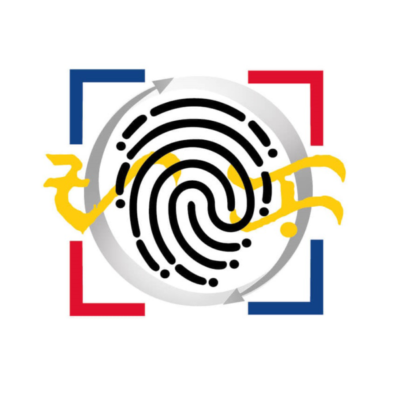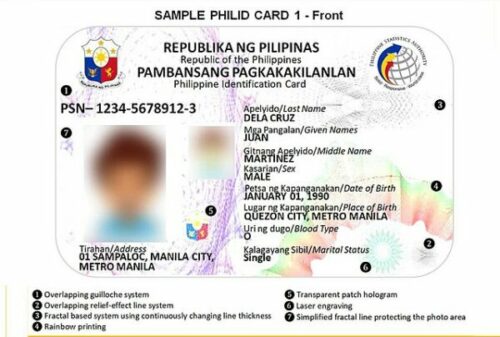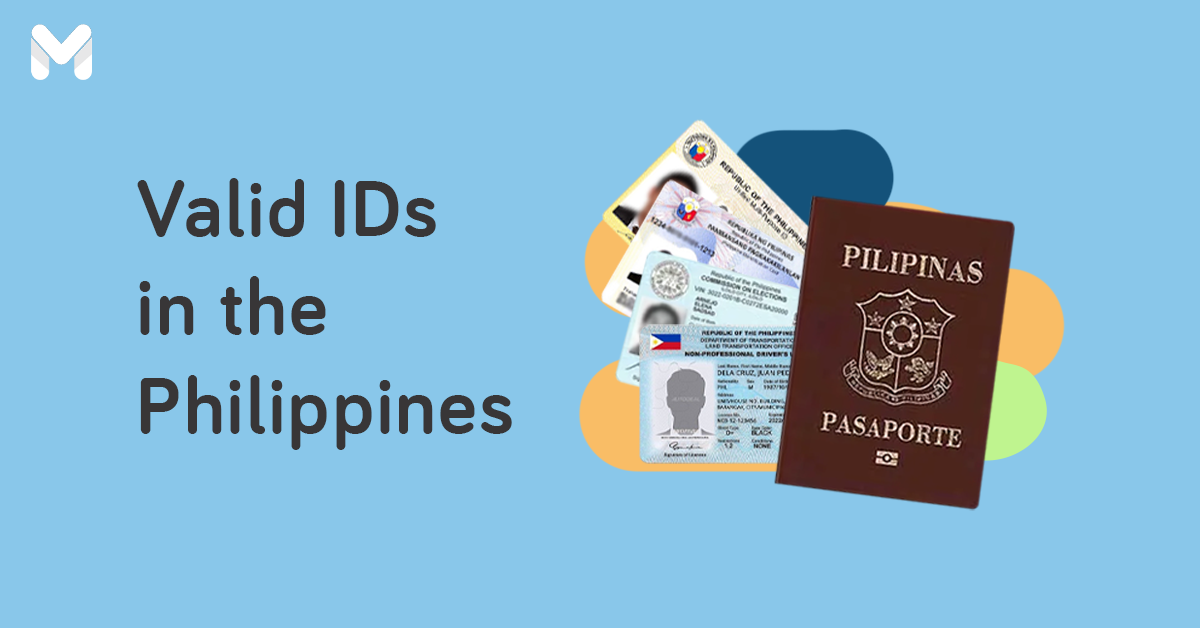Since the PhilSys[1] National ID registration was opened to the public in 2020, millions of Filipinos have completed the biometrics procedure.
However, plenty—if not most—of these Filipinos are still waiting for their National IDs. The Philippine Statistics Authority (PSA) claims the delay is due to the influx of registrants.[2] In the meantime, registrants are encouraged to proceed to PSA’s registration centers to request a printed, temporary version of the ID.
If you’re planning to get your PhilSys National ID or just waiting for it to be delivered, read this article for a refresher on what the PhilSys ID is, a quick walkthrough of the registration process, and how to check the status of your ID.
What is PhilSys?

The Philippine Identification System (PhilSys), also called the National ID system, is the central identification platform of the government for all citizens and foreign residents in the Philippines. It was established under the Philippine Identification System Act or Republic Act 11055.
So what is the PhilSys ID? According to the PSA, the National ID system's chief implementor, it will answer these questions: "Who are you?" and "Are you who you really say you are?"
What is the PhilSys ID?

The PhilSys National ID is a nontransferable identification card that serves as a valid proof of identity for people registered under the PhilSys.
The PhilSys ID contains a 12-digit number called the PhilSys Number (PSN). This unique and lifetime identification number is assigned to each eligible cardholder either upon birth or registration in the PhilSys.
In addition to the printed PhilSys Number, the National ID features a QR code that also contains the cardholder's PSN and two fingerprint data.
Is PhilSys ID a valid ID? While the National ID is considered an official government-issued ID in the Philippines, the PhilSys ID card isn't meant to replace other existing valid IDs used for purposes other than identity verification. These government IDs include passports (for travel), UMID (for SSS/GSIS transactions), PRC ID (for practicing a profession), and driver's license (for driving).
Who is Eligible for a PhilSys National ID?
You should register in PhilSys and get a National ID if you're one of the following:
- Filipino citizens, including those with dual or multiple citizenships
- OFWs and other citizens living abroad
- Foreign nationals living in the Philippines for over six months

How Do I Register for PhilSys? Quick Steps for Walk-In Registration
For a more streamlined process, PSA disabled its PhilSys online registration portal. You can now simply walk in at any registration booth.
If you want to know how to get your National ID card, follow these steps:
Step 1: Go to Any National ID Registration Center
Wondering where to get your National ID? Visit the PhilSys website[3] to see the list of provinces, cities, and municipalities that are open for online booking appointments. You may also get in touch with your local government unit to see if it established a registration center.
Currently, you can also proceed to malls in the Philippines for your National ID registration. SM, Ayala, Robinsons, and Megaworld malls have designated spots where the public can apply for a National ID. If you’re running errands at one of those malls, you might as well visit the PhilSys booth.
📌 PhilSys National ID Requirements
Whether you're looking for National ID requirements for students or adults, make sure to bring the original copy of any of these supporting documents:
- PSA-issued Birth Certificate and one government-issued identification document that bears your full name, front-facing photograph, and signature or thumbmark.
- Philippine passport or ePassport
- GSIS or SSS-issued Unified Multi-Purpose Identification Card (UMID)
- LTO Student Permit or Non-Professional/Professional Driver’s License
If you don’t have any of the documents mentioned above, you can bring the original copy of any of the secondary documents below:
- LCRO-issued Certificate of Live Birth
- PSA-issued Report of Birth
- PSA-issued Certificate of Foundling
- Integrated Bar of the Philippines (IBP) Identification Card
- Professional Regulatory Commission (PRC) ID
- Seaman’s Book
- Overseas Workers Welfare Administration (OWWA) ID
- Senior Citizen’s ID
- SSS ID
- Pantawid Pamilyang Pilipino Program (4Ps) ID
- License to Own or Possess Firearms (LTOPF) ID
- NBI Clearance
- Police Clearance/ID
- Solo Parent’s ID
- PWD ID
- Voter’s ID
- Postal ID
- Taxpayer Identification Number (TIN) ID
- PhilHealth ID
- Philippine Retirement Authority (PRA)-issued Special Resident Retiree’s Visa (SRRV)
- National ID from other countries
- Residence ID from other countries
The following documents will be accepted as secondary supporting documents as long as they bear a front-facing photograph, full name, permanent address, birthdate, and signature/thumbmark:
- Employee ID
- School ID
- Barangay Clearance/Certificate
- Barangay ID
- City/Municipal ID
Just fill out a form and present any of the supporting documents stated above. Next, get your biometrics captured. Make sure to keep your PhilSys transaction slip so you can refer to your PSA PhilSys ID transaction number when needed.
Step 2: Wait for the Delivery of Your PhilSys National ID Card
Once your National ID registration is done, all that’s left to do is to wait for your PhilSys National ID to be delivered to your address. Make sure to present your transaction slip or any valid ID to the courier.
What is the PhilSys ID: FAQs Photo: PSA Philippine Identification System (Facebook)
Photo: PSA Philippine Identification System (Facebook)
Applying for a PhilSys National ID is quick and easy. If you still have some questions about what the PhilSys ID is and how to get yours, here are other details to take note of:
1. Is Philsys National ID registration mandatory?
As stated in the law, National ID registration isn't required for everyone. If you refuse to get a Phil ID, you won't be penalized under the Philippine Identification System Act.
But PhilSys strongly recommends you register, as the PhilSys platform will eventually be used for the issuance of government services.
2. What are the uses of Philsys National ID?
While a lot of people have countered the National ID system, it comes with a lot of benefits. In the Philippines, these are the uses of a National ID system:
✔️ Easier Transactions with Government and Private Organizations
Once the National ID system is fully implemented in the Philippines, Filipinos can use their IDs as sole proof of identity when opening a bank account. The Bangko Sentral ng Pilipinas (BSP) ordered financial institutions to recognize the National ID card when carrying out their Know-Your-Customer (KYC) process.[4] Citizens will find that opening an account will be easier and more efficient.
Former President Rodrigo Duterte also ordered government agencies and private institutions to start accepting the PhilSys National ID as sufficient proof of identification to improve the delivery of public services and promote ease of doing business.[5]
✔️ Simpler and Faster Access to Government Services
The National ID will be accepted in most government transactions. This means that you'll have better and quicker access to government services, such as financial assistance, social protection, health education, and more.
✔️ Reducing Identify Fraud
The National ID system identifies each registered Filipino at a national level. With this capability, the government can reduce or eliminate identity fraud while strengthening the accuracy and integrity of identification databases.
✔️ Control Over Your Personal Data
The National ID system empowers Filipinos by allowing them to determine who sees their data during transactions using PhilSys. This fosters transparency and accountability when it comes to data handling in the country.
Read more: National ID System in the Philippines: The Good and the Bad
3. Does the PhilSys National ID expire?
The PhilSys National ID has no expiry date. However, newborns (who are automatically issued a PhilSys identification card without fingerprint and iris scan) will be given a new ID card when they turn five to register their complete biometrics.
4. Where is the PhilSys National ID accepted?
The National ID is accepted in a wide range of transactions in public and private sectors in the Philippines, including the following:
- Application for social welfare programs and benefits from the SSS, GSIS, PhilHealth, Pag-IBIG Fund, and other government agencies
- Issuance of passport, driver's license, and other government-issued IDs
- Bank account opening and other transactions with banks and other financial transactions
- Tax-related transactions
- COMELEC registration and voting
- Admission to schools or government hospitals
- Transactions for employment purposes
5. How much is the PhilSys National ID fee?
For Filipino citizens, both the first-time PhilSys National ID application and renewal (replacement of ID card for recapturing or updating biometric info) are free of charge.
Foreigners living in the Philippines will have to pay a standard fee for the initial PhilSys ID application, renewal, or replacement due to a lost or damaged card.
6. Is there a minimum age requirement for PhilSys national ID registration?
According to PhilSys, registration is open to all ages, including newborn children. For kids below five years old, only their demographic information and front-facing photographs will be collected. Their PhilSys Number will be linked to their parent or legal guardian.
However, once the kid turns 15, they need to update their information and get their biometrics recaptured.
7. How can I track my PhilSys ID?
You may check the status of your PhilSys National ID delivery through the Philippine Postal Corporation website via PHLPost Tracking.[6] To use the PhilSys National ID tracker, follow the steps below:
- Go to tracking.phlpost.gov.ph.
- Enter your PhilSys ID transaction reference number. Wondering, "Where can I find my PhilSys National ID number?" You can find this on the PhilSys transaction slip provided to you during registration.
- Click Track to check the status of your National ID delivery.
Note: If you don't see any results, this indicates that your National ID is still being processed. Allow a waiting period of around six months for your ID to be delivered.
8. How to get a digital copy of my National ID?
If you haven’t received your National ID yet, you can use the printed ePhilID temporarily. The ePhilID is essentially an alternative version of the PhilSys National ID that you can print and use for your transactions.
Note that it’s accepted as valid proof of your identity and age. For instance, the Department of Foreign Affairs-Office of Consular Affairs (DFA-OCA) said that it would accept ePhilIDs as valid documents for passport applications.
The printed ePhilID shows pertinent information such as your full name, sex, date and place of birth, marital status, blood type, and address. It also bears your 1x1 photo and a QR code.
So where to download or get a temporary National ID? To claim your ePhilID, you need to make an appointment via the PhilSys website. Here are the steps:
- Visit the official ePhilID Appointment System.[7]
- Agree to the Privacy Notice. You’ll be directed to a page where you’ll input your 29-digital reference number from your transaction slip.
- Supply the required personal details, such as your name, email address, and contact number.
- After filling out the form, wait for a verification code to be sent to your registered mobile number and email address.
- Select the registration center and the date and time of the appointment.
- Check the appointment slip sent to your email. Print out a copy or take a screenshot of it on your phone. You’ll need to present it on your appointment day.
Note: Printing of ePhilID is available only in select areas. Currently, these include Metro Manila, Pampanga, and Bulacan.
9. How do I verify my National ID?
Got your National ID already? Congratulations! To verify its legitimacy, head over to verify.philsys.gov.ph, click the Scan QR Code button, and open your camera so the website can scan the QR code on your PhilSys National ID.
10. Is my data safe with PhilSys?
The PhilSys tells the public that sufficient safeguards are in place to ensure information security, cybersecurity, data protection, and privacy.
According to PhilSys, the data collected and stored by the system is strictly defined and restricted by the Data Privacy Act and the PhilSys Act. This means the system isn’t supposed to collect data beyond what is needed. It doesn’t collect information on a person’s political or religious affiliation, socio-economic status, educational background, and criminal records, among others.
PhilSys also uses tokenization, which is a process of replacing sensitive data with derivative data. That way, your personal data will be secured.
Registrants can use two types of tokens. First is the PhilID Card Number (PCN), which is printed on the front of your card. Second is the Alyas PSN, which you can generate through the PhilSys portal and mobile app. Either of the two tokens can be provided with a one-time PIN (OTP) or biometric in case of digital authentications or e-KYC transactions.
Lastly, the PSN cannot be stored in the government agencies’ and private sector’s databases. However, these organizations can store particular tokens that will let them establish the uniqueness of registrants or cross-check data with other agencies as long as consent is given or the act is legally authorized.
Final Thoughts
Now that Filipinos know what the PhilSys ID is and what it's for, we can only hope that this ID system will remedy or at least simplify the bureaucratic transactions in the government and the private sector.
The long wait for National IDs is frustrating and inconvenient for Filipinos, but hopefully, the government lives up to its promise to expedite the printing of new IDs.
We recommend that you follow the PSA Philippine Identification System page on Facebook for updates concerning National ID registration and delivery.

Sources:
- [1] Republic Act 11055 (Official Gazette)
- [2] PSA blames high volume of registrants for delayed national ID printing (GMA News Online, 2022)
- [3] National ID Registration Centers (PhilSys)
- [4] National ID to be Accepted by Banks as Sole Proof of Identity (BusinessWorld, 2021)
- [5] National ID should be accepted for all transactions, Duterte says (BusinessWorld, February 2022)
- [6] PHLPost Tracking (PHLPost)
- [7] ePhilID - Philippine Identification System









